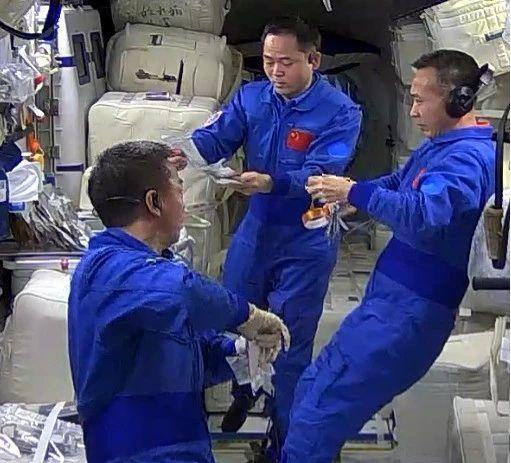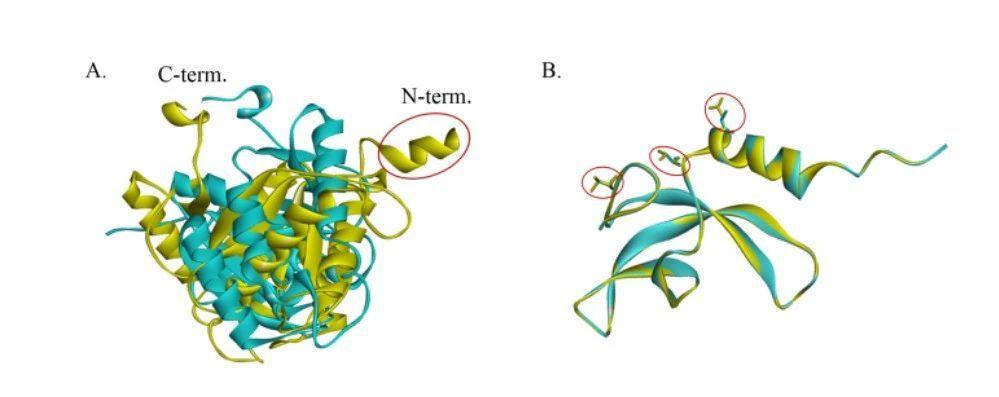Key Points
- A brand new microbe species, named Tiangong Niallia tiangongensis (Tiān gōng Ní ěr jūn), has been discovered inside China’s Space Station (Tiangong 天宫), marking a first for the orbiting lab.
- The discovery was part of the CHAMP (China Space Station Habitation Area Microbiome Program), involving microbial samples collected by Shenzhou 15 astronauts in May 2023.
- Tiangong Niallia tiangongensis is a Gram-positive, spore-forming bacterium belonging to the Niallia genus within the Cytobacillaceae family.
- It exhibits remarkable stress resistance, particularly to oxidative stress via Bacillithiol (BSH) regulation, and shows unique traits in biofilm formation and radiation damage repair, making it well-adapted to the space environment.
- This discovery offers fresh insights for developing targeted microbial control strategies in fields like aerospace, agriculture, industry, and medicine, and highlights potential for the utilization of space microbial resources.

Get ready for some out-of-this-world news: a brand new microbe species discovered inside China’s Space Station has just been publicly announced, marking a first for the orbiting lab!
This tiny pioneer has been officially named Tiangong Niallia tiangongensis (Tiān gōng Ní ěr jūn).
The groundbreaking research findings hit the digital shelves of the highly respected “International Journal of Systematic and Evolutionary Microbiology.”
So, What’s the Big Deal About a New Microbial Species?
Microorganisms are basically Earth’s OGs – some of the oldest and most diverse life forms around.
They’re incredibly tiny but are literally everywhere: from the air we breathe to the deepest soil, from high-pressure ocean trenches to chilling inside our own bodies.
Think of the microbial world as a massive, invisible treasure chest.
Discovering a new microbial species is like unlocking a door to a completely unknown realm.
So, what exactly is one?
Simply put, it’s a microorganism that has never been spotted, studied, or given a name by humans before.
Now, picture a space station: it’s a wild mix of conditions.
You’ve got:
- Microgravity (things float!)
- Radiation exposure
- Strict confinement
- Not a lot of nutrients just lying around
- Extreme temperature variations outside
- High radiation levels (cosmic and solar)
- Microgravity environment
- Limited air circulation
- Specific human-provided nutrient sources
- Name: Tiangong Niallia tiangongensis (Tiān gōng Ní ěr jūn)
- Classification: Gram-positive, spore-forming bacterium
- Genus: Niallia
- Family: Cytobacillaceae
- Key Traits: Oxidative stress resistance (Bacillithiol regulation), Biofilm formation, Radiation damage repair
- Environment Discovered: Inside China’s Space Station (Tiangong 天宫)
Scientists are buzzing with curiosity: just how many unknown tiny life forms are thriving up there?

Resume Captain
Your AI Career Toolkit:
- AI Resume Optimization
- Custom Cover Letters
- LinkedIn Profile Boost
- Interview Question Prep
- Salary Negotiation Agent

The Hunt: How Was Tiangong Niallia tiangongensis Found in Space?
This stellar discovery didn’t just happen by accident.
It was all thanks to the support from the China Space Station (Tiangong 天宫) project’s space technology testing program.
The research crew was laser-focused on a crucial mission: tracking the dynamic changes and ensuring safety control of environmental microorganisms during the long-term gig of the China Space Station (Tiangong 天宫).
They set up a cool-sounding program called CHAMP (China Space Station Habitation Area Microbiome Program), designing multi-batch, full-module, panoramic microbial monitoring tasks for the astronauts’ living quarters.
Here’s the play-by-play:
Back in May 2023, the astronauts from the Shenzhou 15 mission got to work.
They used sterile sampling wipes to collect microbial samples right from the surfaces inside the space station cabin.
These samples were then carefully stored at low temperatures and sent back to Earth.
Once on solid ground, researchers dove into experimental analysis and struck gold: they identified a completely new microbial species – Tiangong Niallia tiangongensis (Tiān gōng Ní ěr jūn).
Confirming this unique species wasn’t a quick job. It involved a powerful combo of multidisciplinary methods, including:
- Morphological observation (what it looks like)
- Genome sequencing (reading its DNA)
- Phylogenetic analysis (its family tree)
- Metabolic analysis (how it makes a living)

△ An astronaut carefully conducting microbial sampling in orbit. Essential work for discoveries like these!

Find Top Talent on China's Leading Networks
- Post Across China's Job Sites from $299 / role, or
- Hire Our Recruiting Pros from $799 / role
- Qualified Candidate Bundles
- Lower Hiring Costs by 80%+
- Expert Team Since 2014
Your First Job Post

What Makes Tiangong Niallia tiangongensis a Space Survivor? Unpacking Its Unique Traits
Microorganisms are master adapters.
They cleverly evolve unique biological tricks to handle the harsh stresses of the space environment.
And in turn, the space environment, with its selective pressures, shapes their metabolic and physiological features.
The newly discovered Tiangong Niallia tiangongensis (Tiān gōng Ní ěr jūn) is a type of Gram-positive, spore-forming bacterium.
It belongs to the Cytobacillaceae family and joins the Niallia genus.
Compared to its known relatives, Tiangong Niallia tiangongensis is a real standout when it comes to adapting to the space environment:
First up: Superb “Stress Resistance.”
This microbe has an amazing ability to handle stress.
It precisely responds to oxidative stress – a common challenge in space – by regulating the biosynthesis of something called Bacillithiol (BSH).
This clever mechanism helps maintain its intracellular redox balance (keeping things stable inside the cell), allowing it to grow robustly even under extreme conditions.
Second: Master of Defense and Repair.
Tiangong Niallia tiangongensis also shows off some unique characteristics in areas like biofilm formation and radiation damage repair.
These combined abilities essentially make it an all-around adaptable organism, perfectly capable of thriving in the unique environment of space.

ExpatInvest China
Grow Your RMB in China:
- Invest Your RMB Locally
- Buy & Sell Online in CN¥
- No Lock-In Periods
- English Service & Data
- Start with Only ¥1,000

△ A glimpse into how microorganisms like Tiangong Niallia tiangongensis might adapt to challenging environments.
- Oxidative Stress Resistance (via Bacillithiol regulation)
- Biofilm Formation (potential protective mechanism)
- Radiation Damage Repair capabilities
- Robust growth in potentially harsh conditions

Beyond the petri dish: What Insights Does This Space Microbe Discovery Offer?
The discovery of Tiangong Niallia tiangongensis (Tiān gōng Ní ěr jūn) and its unique survival toolkit for the space station environment is more than just a cool science fact.
It’s bringing fresh insights to researchers across various fields.
Here’s why this matters:
Its space environment adaptation mechanisms are not just fascinating; they could help us design targeted microbial control strategies.
Think precise intervention approaches for important fields like:
- Aerospace (keeping astronauts and equipment safe)
- Agriculture (boosting crop resilience)
- Industry (developing new bioprocesses)
- Medicine (finding new antibiotics or probiotics)
But wait, there’s more!
There are also exciting possibilities in the utilization of space microbial resources.
This microbe’s ability to utilize certain organic matter could open up new pathways for the sustainable use of these substances, both in space and potentially back on Earth.
The space station itself is proving to be an incredible platform for discovering and studying new microbial species.
As the China Space Station (Tiangong 天宫) continues its long-term operations, research focusing on microbial active substances, genetic resources, and metabolic functions is poised to make significant leaps.
This will undoubtedly bring new development opportunities for scientific research and practical applications right here on our home planet.
This new microbe species from China’s Space Station is just the beginning of unraveling the mysteries of life in orbit, promising a future rich with discovery.






